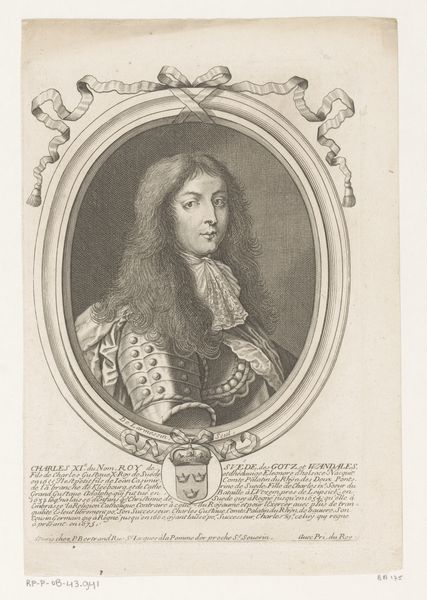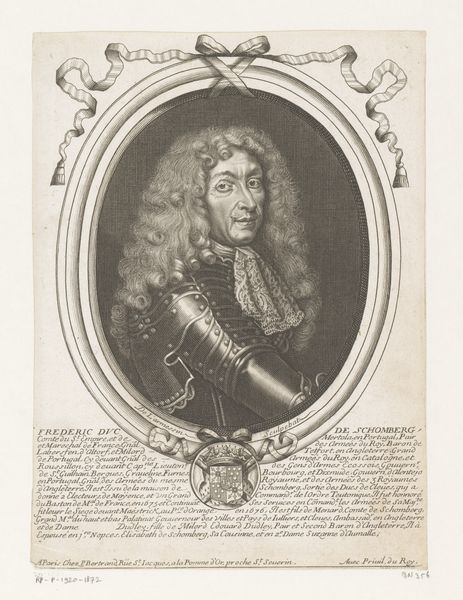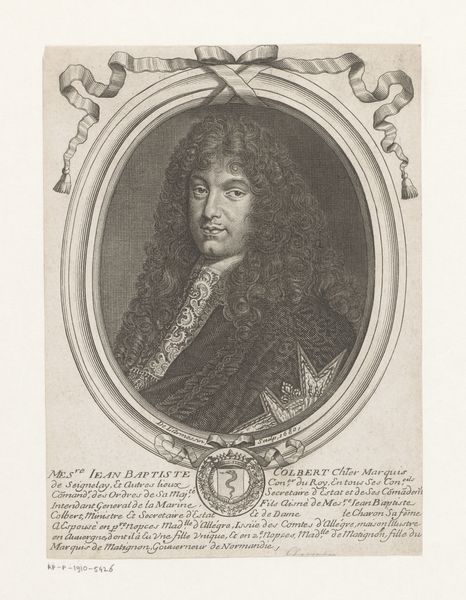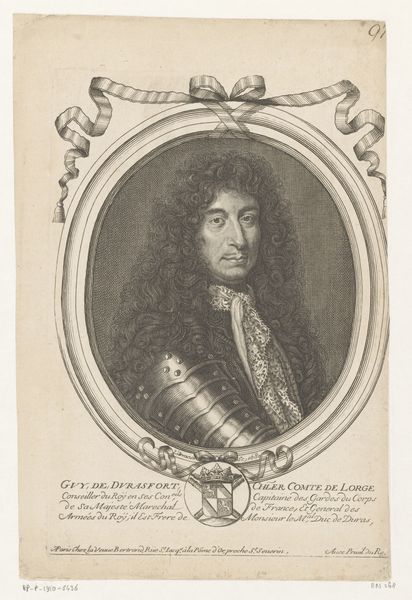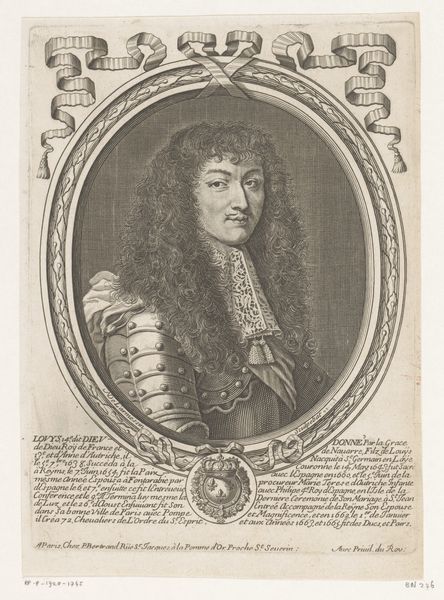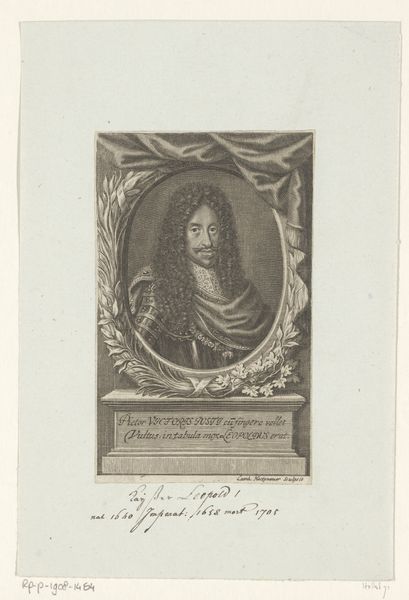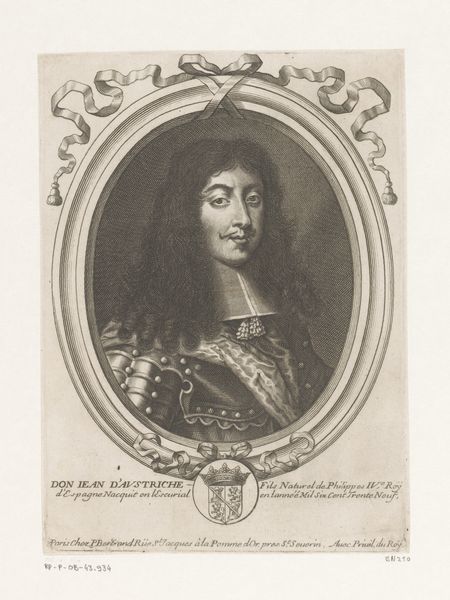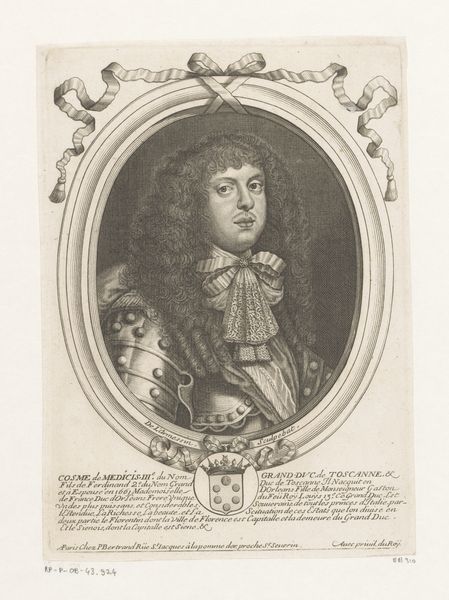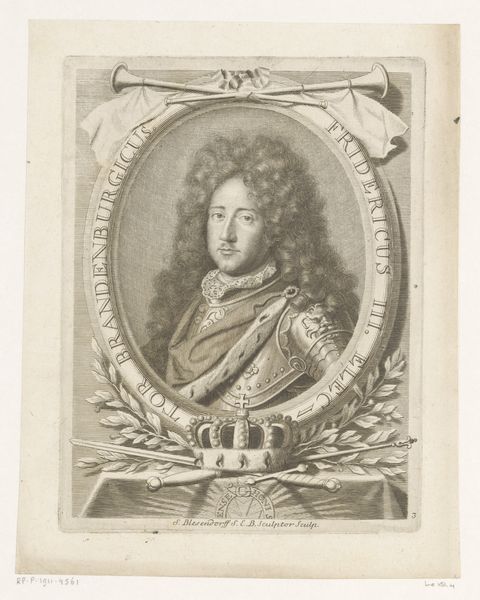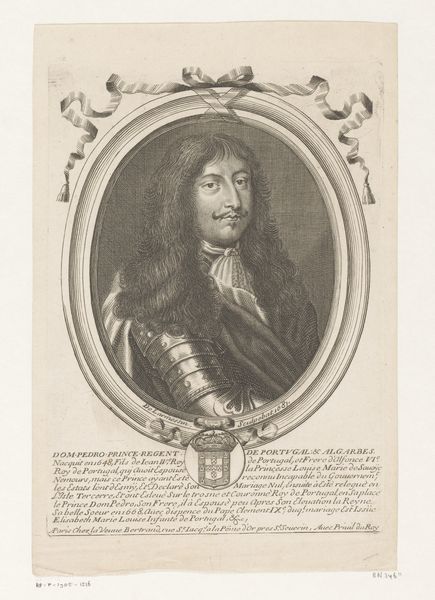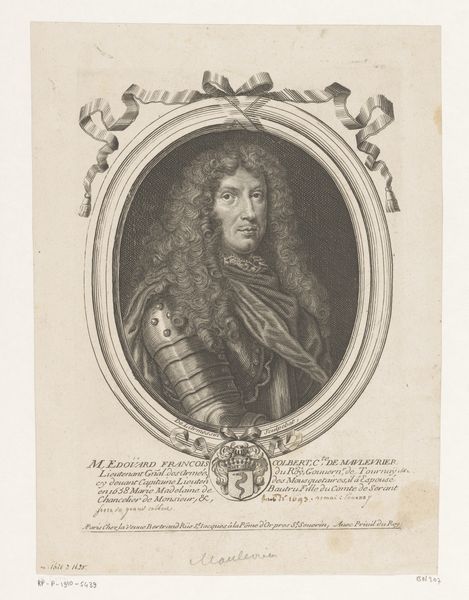
print, engraving
#
portrait
#
baroque
# print
#
old engraving style
#
figuration
#
form
#
personal sketchbook
#
old-timey
#
line
#
history-painting
#
academic-art
#
engraving
Dimensions: height 238 mm, width 168 mm
Copyright: Rijks Museum: Open Domain
Curator: Let's discuss this engraving at the Rijksmuseum, "Portret van Jacques Henri de Durfort de Duras," created around 1680 by Nicolas de Larmessin I. I find the meticulous detail in the rendering of the armor quite fascinating. The craft involved, the way light would reflect off each precisely etched curve—it speaks volumes about the value placed on both the process and the subject’s status. Editor: My immediate impression is one of controlled power—the rigid frame, the swirling wig contrasting with the sharp lines of the armor. He’s framed not just as an individual, but as a symbol, tightly bound to societal expectations. This portrait tells a story about the construction of identity in a hierarchical society. Curator: Precisely. Consider the labor involved in producing prints like these; each line etched, each plate carefully inked. It’s a pre-industrial mode of production that circulated images and, by extension, power. How many impressions were made? Who consumed them, and what did it mean to own an image of such a figure? Editor: It’s a potent visual declaration of aristocracy. But also, what does it tell us about the engraver's labor within that system? Larmessin, while immortalizing de Duras, also became part of a system reinforcing that hierarchy. The print wasn’t simply consumed—it was activated in ongoing performances of class. Curator: True, the artist’s workshop itself was embedded in these social hierarchies, reliant on patronage and connected to specific networks. Analyzing the print through its production and consumption allows us to move beyond aesthetic judgment and see it as a material object interwoven with the structures of its time. Editor: Absolutely. This isn't just a rendering; it's an embodiment of power dynamics, skillfully crafted to preserve and disseminate a specific social order. Looking closer, one wonders: who did this portrait fail? Curator: Indeed, a lens on the complex relationship between the artist, patron, and social structures they navigated through this medium. Thank you. Editor: Agreed. There's a tension here between immortalization and perpetuation of inequity, and unpacking that makes all the difference.
Comments
No comments
Be the first to comment and join the conversation on the ultimate creative platform.
